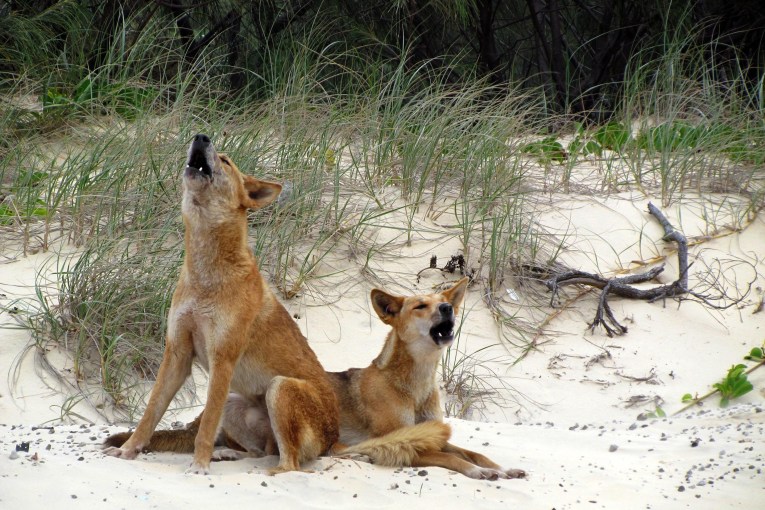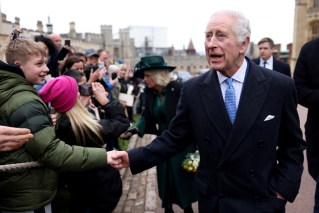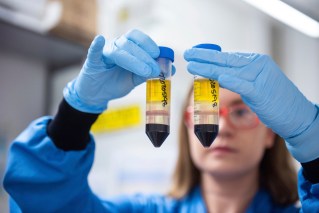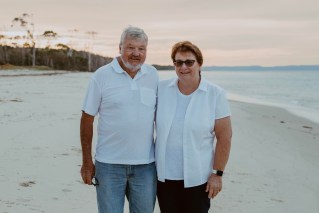Gemfields residents are struggling, ‘dying of malnutrition’, health researcher says
Queensland’s Gemfields is known for precious stones, but beneath the promise of striking it rich its ageing population struggles to access fresh, nutritious food, and eats “chips and dips” to survive.
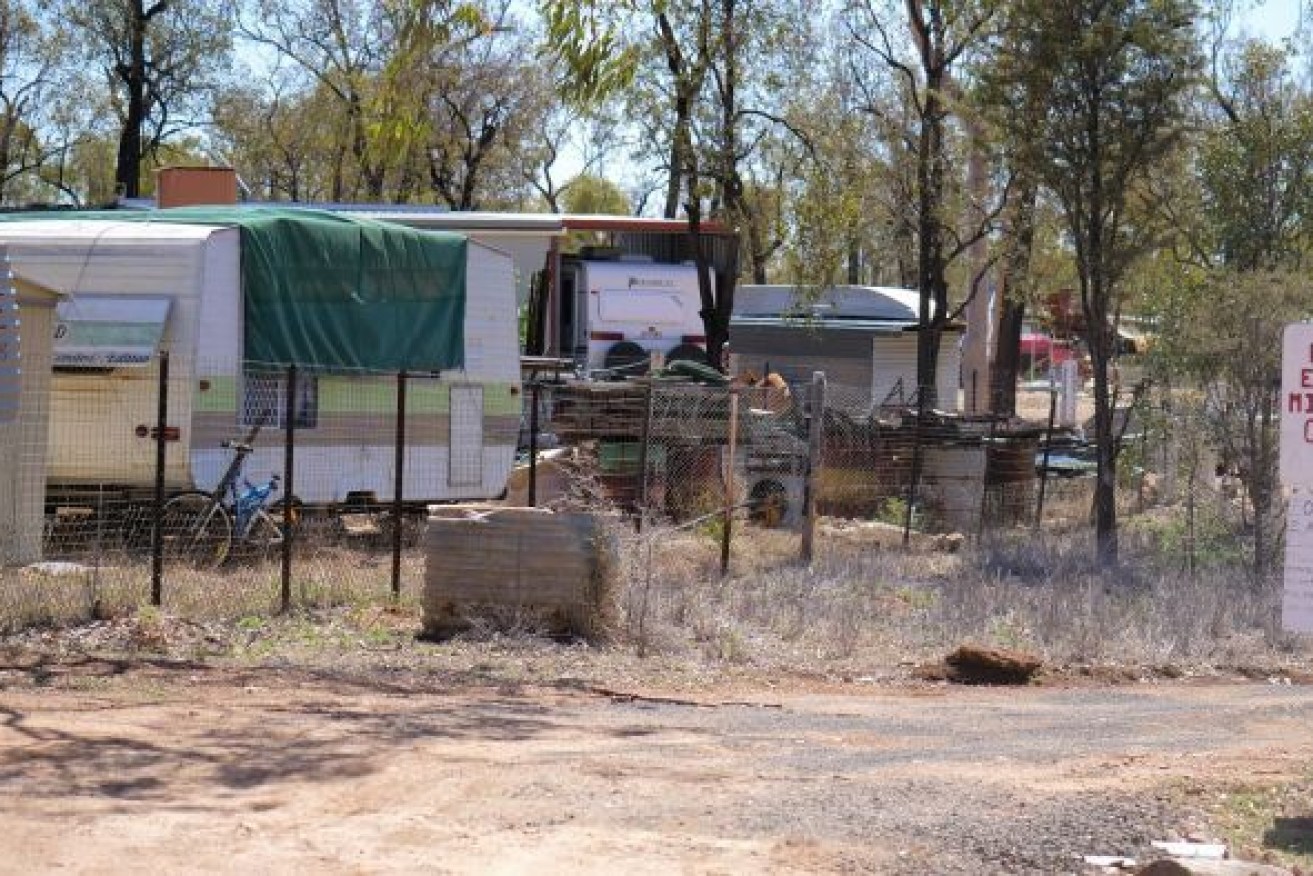
Many people in the Gemfields have no permanent water, power, or sewerage systems. (Photo: ABC)
Queensland’s Gemfields has a dazzling reputation for fossicking precious stones, but Lisa Caffery says many of the area’s ageing population are struggling to access nutritious food.
The population of more than 1400 is spread over about 900 square kilometres of Queensland’s Central Highlands, 50km west of the regional centre of Emerald.
Lisa Caffery, a Central Queensland University PhD researcher, said it was an understudied community, mostly made up of non-Indigenous senior men with complex health needs.
“It’s actually one of Australia’s last mining commons,” she said.
“That means people can peg out a 30-by-30-metre holding … and live on it as a mining claim.
“It’s a very cheap way of living and a lot of people get gem fever and they’re wanting to dig for gems, but it’s also a way to perhaps disengage from society.
“There’s no running water, no electricity, no sewerage, so you’re living a very different lifestyle to what average people in urban Australia would recognise — with that comes disadvantage.”
But Caffery said the charming lifestyle was not suitable for everyone.
“Trying to access fresh, healthy, nutritious food is a day-to-day struggle,” she said.
“The majority of people are living on packet or tinned food as their main sustenance.”
Her study found limited transport, geographic isolation, lack of refrigeration, poor nutrition knowledge and cost had led to food insecurity in the area.
“[Fifty kilometres] doesn’t sound like a long way in rural and remote terms, but it is a long way if you don’t have a car or you don’t have enough money to put fuel in the car,” Ms Caffery said.
She said food insecurity was often identified in Indigenous communities, but it was also common in isolated rural and remote communities.
Surviving on ‘chips and dips’
Caffery interviewed 45 residents, health workers, and outreach service providers for her study and discovered malnourishment in the Gemfields due to poor food security.
“[One elderly lady] just lived on chips and dips because she didn’t have to refrigerate them and she didn’t have to cook,” she said.
“In her humpy she didn’t have any cooking facilities and that is a really common experience.
“The consequence of not having good food security and access to safe, nutritious food is there are then health consequences.
“There are people living in the Gemfields right now who are clinically malnourished.”
Caffery was shocked to learn malnourishment was an issue so close to her own home in Emerald.
“It’s not something you would actually associate with a developed country like Australia, but we actually have that problem right here in central Queensland,” she said.
“We can’t have people in this day and age dying of malnutrition and that absolutely is happening right now in the Gemfields.”
‘We help each other’
Robyn Greenwood has lived in the area for 16 years and has been a cook at the Gemfields Community Centre for more than a year.
The centre does Meals on Wheels on Mondays and Wednesdays, as well as a low-cost community lunch on Fridays.
“There’s a lot of elderly people out there who wouldn’t eat if we didn’t actually cook for them and take it to them,” Greenwood said.
Fellow cook Vanessa Hancock said making the food was only one part of their job.
“We’re not just cooks, we’re companions as well,” she said.
“We’re there and we have a chat with them and see how they’re going and how their wellbeing is.”
Julia Naysmith lives on a claim at Rubyvale and uses the community centre’s services.
“They bring me meals and they also send somebody out every morning,” she said.
“[A carer] helps me shower and dress and make sure I’m started for the day.”
The 74-year-old’s husband died a few years ago. Her son lives with her and mines gems.
Friday lunch is part of her weekly routine.
“It’s the highlight of my week, and has been for quite a few years, because of the trouble I’ve had with my feet, with my diabetes and everything,” Naysmith said.
“I can see everybody and have all my friends, we catch up with each other, we all do what we can to help each other.”
What can be done?
Marg Lewis has worked at the Gemfields Community Support Association for 12 years and is in the community reference group.
“Public transport has always been on top of the agenda for the Gemfields,” she said.
“It would open up more work opportunities … it just opens up a lot more hope and opportunity for people out here.
“The groceries they need or want; it’s all in Emerald.”
Caffery hoped her study would empower the community to work towards solutions for better food security and health outcomes.
She said installing footpaths, finding cheaper and more efficient ways to power fridges for food storage and organising a food bank could be a start.
“The Gemfields is an amazing, resilient, positive community with some fantastic advocates,” Caffery said.
– ABC / Erin Semmler
